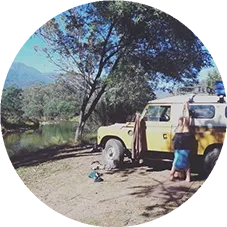What I adore about the study of plants is that it is largely a process of inquiry. Without a formal degree in herbalism, one must rely on careful identification and experimentation, and the reading of the research that others have done. But then, that’s what our ancestors have done for thousands of years. It’s what we love about the study of natural medicines – it’s an inheritance that has been passed down through generations of folk lore, poetry, literature, scientific study and anecdote.
The internet is both a curse and a blessing. Whilst it’s easy to find many references to a herb online, it’s either piecemeal, delivered via blogs and youtube videos, or it is scientific study, which is few and far between. There is no one definitive site that lists all known references of the plant in question, the minute details of how to prepare it and administer it, and it’s contra-indications. It’s easy to get lost.
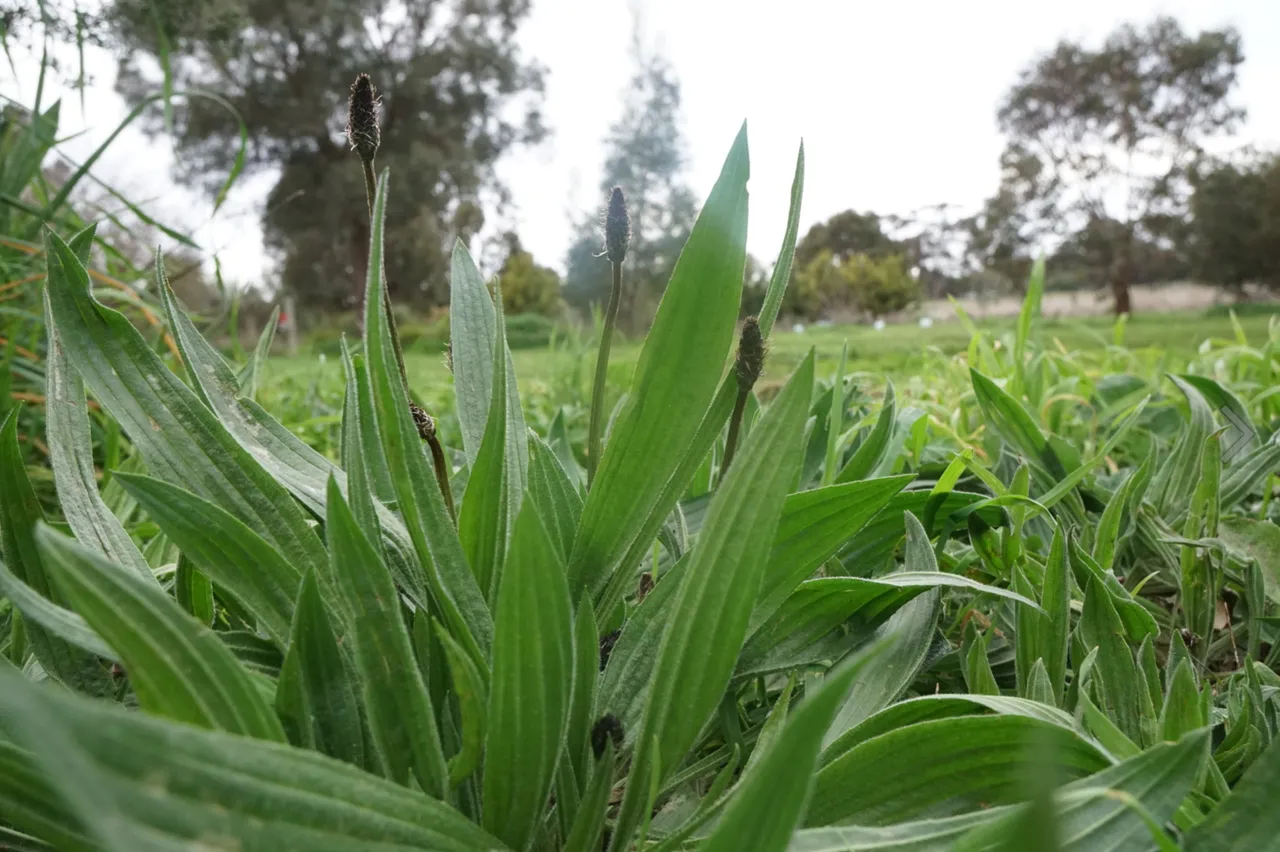
I’ve taken to journals to record what I find out about herbs in journals, quick reference guides that do not need me to start up the internet and that I can take travelling too. I have two – one that sorts by the name of the plant, and one that is more an investigation into a remedy. For example, my husband wanted me to find out how to make a beard oil, and my sister was suffering severely cracked heels. It usually takes 2 – 3 pages of notes gleaned from a handful of books and from the internet to record all I need so that I can play with creams, tinctures and teas either that day, or at my leisure.
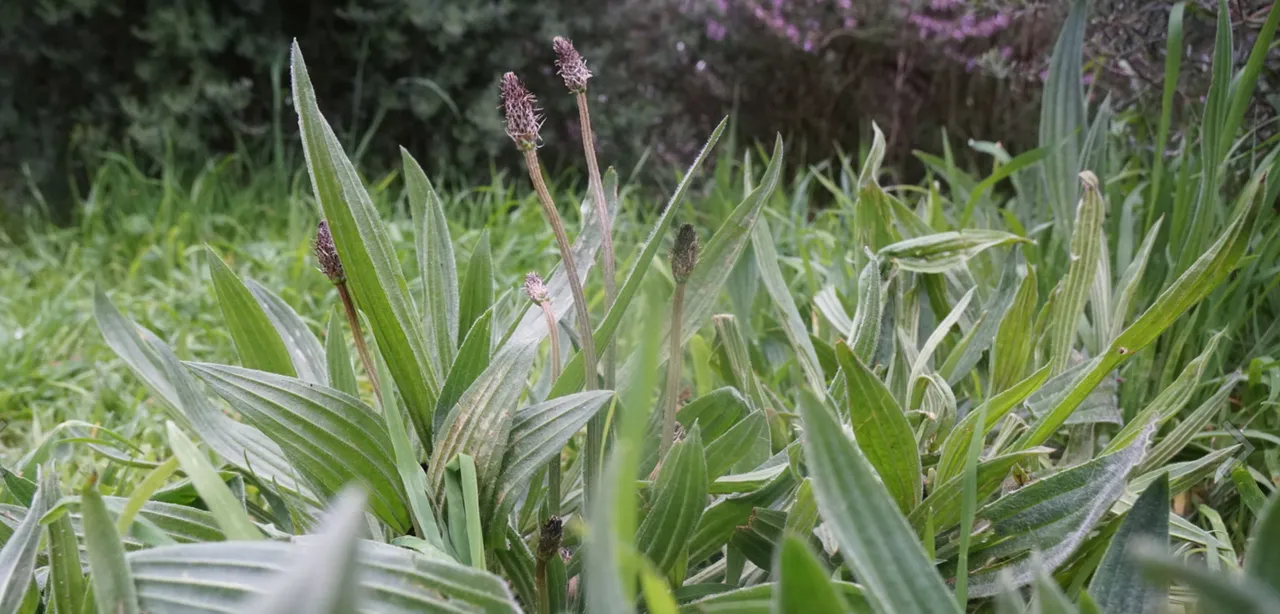
In the second journal, I sort by plant. Usually I spend a week or two studying it, recording it’s use. This winter plantain has stolen the show, as I have cultivated – or rather, not mown a patch of it growing proudly behind the rosemary bush. There has been a number of methods for the preparation of plantain that I have tried, although am yet to experiment with beyond a plantain drawing salve. Three jars sit on my bookshelf – a plantain oil, a plantain vinegar, and a plantain vodka tincture. The vinegar will be used for a facial toner as plantain is both an astringent and a mucilage – drying and moisturising. I cannot find much about this on the internet, so I will let you know how it goes. I don’t have flawless skin, and was interested in a toner that I could make myself.
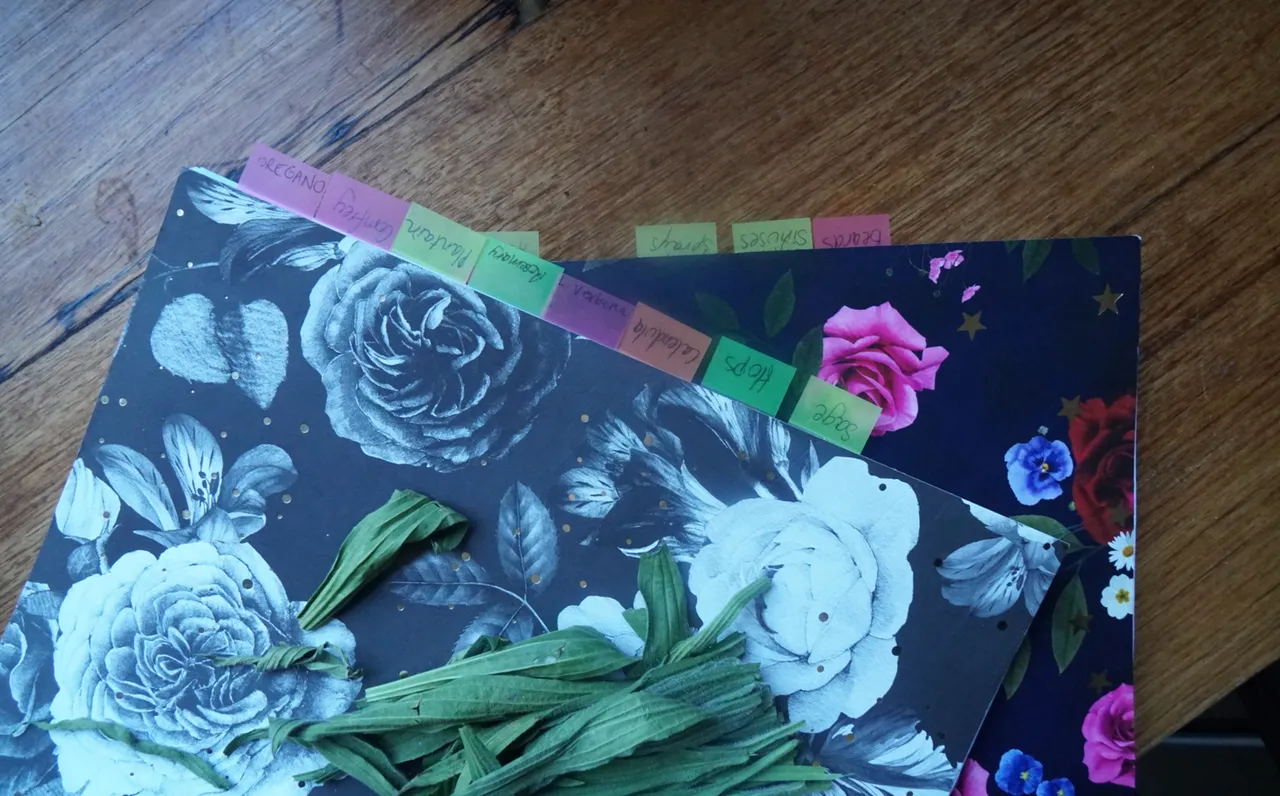
The oil is to be made in another drawing salve or first aid cream. The first lot I made was a fast method – impatient as I made it by putting a jar of plantain and oil in hot water on the stovetop, a makeshift double boiler. It is reasonable, but I wouldn’t say wondrously effective. Leaving it for a good few months to infuse would probably be the better option.
Tea is easy and quick, and we can absolutely attest to the benefits. Having just gone through a nose operation for a deviated septum, my husband was suffering, especially in the cold air as we travelled in the van up the coast at the beginning of winter. Finding huge blades of plantain by the coast, I made him tea in the back of the van and we sipped it through the day. The days that he didn’t have the tea, he was in pain. The days he did have the tea, he wasn’t. If there’s any better proof than that, I’m not sure what it could be – it’s known to be anti-inflammatory and good for anywhere there is external or internal bleeding. Think bruises, piles, nose operations, urinary tract infections – or scrapes and cuts. In fact, it’s beginning to be clear to me that a tea might be the best way to ingest plantain altogether.
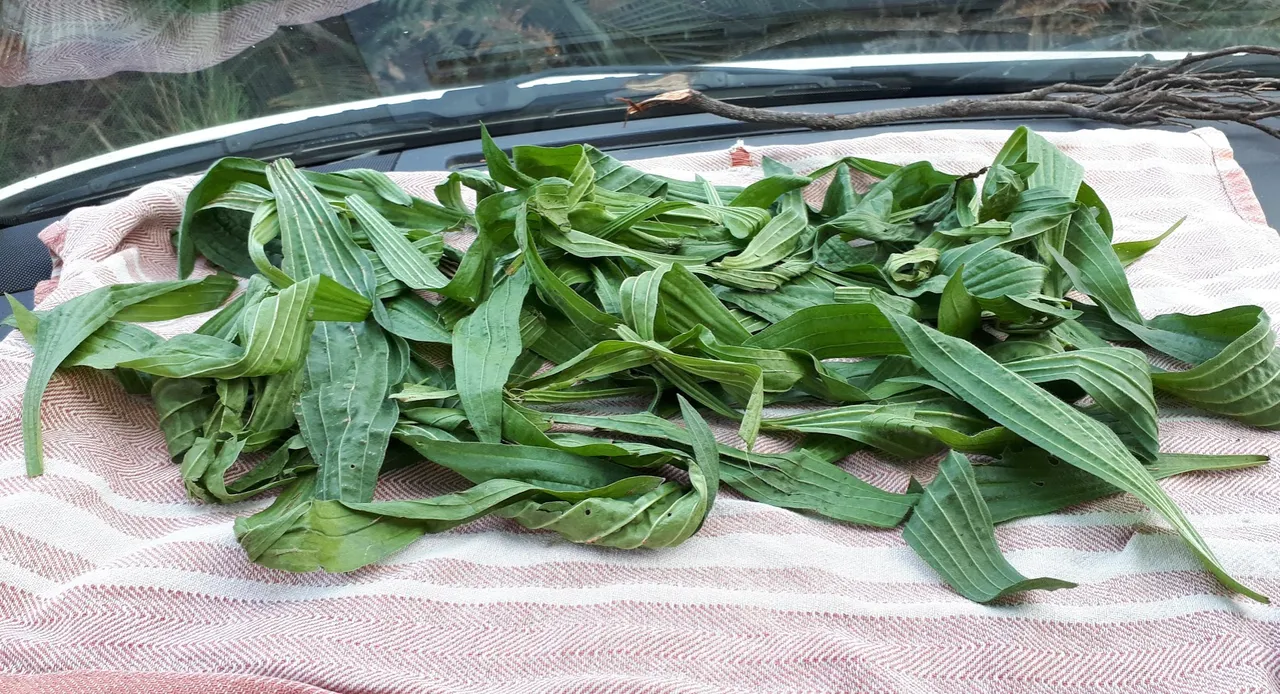
Plantain drying on the dashboard on our road trip.
Susan Weed calls it the bandaid plant, as well as it’s ability to bind to cholesterol in this video. We’ve been using a lot of plantain seeds – or psyllium – in a healthy vegan seedy loaf that we eat for breakfast every morning.
The tincture is a beautiful, magical dark green. My son’s daughter is currently experimenting with dropperfuls of the stuff as she has a cough and a bit of a throat infection. The internet lists that it is good for such things – as well as hayfever, asthma and sinusitis – but I’m yet to see if this tincture does the job. The proof is in the plantain pudding, so to speak. However, as I find out watching Susan Weed’s video above, it’s more effective or more convenient as a spit poultice (where you masticate the leaves and press them on the wound) if you put it in a spray bottle. Thus, could I investigate a first aid spray? What else would I put in it?
And so my study goes on. I am not an expert. I’m just doing as my ancestors have done – exploring, being curious, recording, observing, creating. It’s an important process, and one I encourage every one to do. As Susun Weed says, it takes seven lifetimes to be an herbalist, as there’s so many factors involved – what is available to you, how it is prepared, what part of the plants are used and so on. Journaling helps me retain the information I learn, and perhaps one day, I can pass it on to someone else.


@naturalmedicine II Discord Invite II #naturalmedicine


Discord 🧘About


